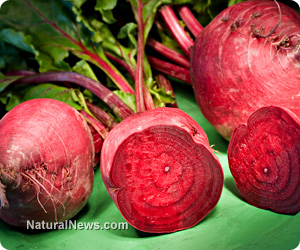|
BEAUTY OF NATURE
Sunday, 21 April 2013
Be natural
Bizarre extrasolar planet
Using a ground-based radio telescope, researchers have captured faint variable radio emissions from an extrasolar planet, orbiting a metal-rich star about 125 light years from the Earth 1. Known as HAT-P-11b, this planet is 26 times heavier than the Earth.
Saturday, 20 April 2013
Australia's Great Barrier Reef threatened by coal mining
joined the Rainbow Warrior III in Townsville, a city in the north-eastern coast of Queensland, Australia. After catching up with my Australian counterparts on the campaign and tour, I found myself in a small public gathering in the evening comprising of marine scientists, members of local conservation groups, journalists and think-tanks. Everyone was worried about one thing- coal!
From there started my interactions with Queenslanders who are going to be the most impacted by the largescale mining proposed in Galilee Basin. Nine new mega mines have been proposed in the Galilee Basin, two new rail lines to ferry the coal and nine new export coal terminals on Queensland coast to cater to the ferried coal. This will mean dredging and dumping of 113 million cubic meters of seabed for ports and upto 10,000 coal ships crossing the reef every year. Two Indian companies, Adani and GVK, are involved in these mega plans. The Australian government does not seem to be unduly worried about the Great Barrier Reef, nor about the 60,000 people who are employed due to the reef- in tourism, fishing and research industry.
All of these not only threaten the Great Barrier Reef, but also coastal wildlife and habitats such as the mangroves, wetlands, snub-fin dolphins, black-throated finches etc, 10 billion litres of water which will be sucked up from the surrounding environment and serious health impacts for the worried locals from transportation of coal. Furthermore, the coal burnt from Galilee Basin will add 705 million tonnes of CO2 which will surely accelerate world temperatures to beyond 4 degrees or more. So it is natural that many people are worried in Queensland and Australia but everytime people have protested, the government and coal industry in Australia blames them of relegating many poor Indians to energy poverty!

Virus Ties Snakes into Knots.
Snakes afflicted with a relatively new disorder have demonstrated unusual symptoms. They tend to tie themselves into knots, stare off into space, stop eating and eventually waste away. DNA analysis has revealed that a virus is at work, but there is still confusion as to the virus’s origins. It is possible that because the virus contains elements of at least two different viruses, it evolved in snakes millions of years ago. Another possibility is that the virus is the result of the recent genetic merger of the ebola virus and another virus. Unfortunately, there is at this point no effective curAnimals Experience Awareness.
A distinguished cadre of scientists, including Stephen Hawking, have signed a document called the Cambridge Declaration on Consciousness. The document relies upon a body of research that has established that many animals, even octopuses, experience awareness. One of the key supporting elements of the Declaration is the discovery that the human neocortex is not a prerequisite for consciousness. Other brain structures can duplicate many of the indicia of consciousness and are found in animals as varied as dolphins, birds and octopus. Moreover, animals share with us similar sleep patterns and new brains research has revealed “emotional networks and cognitive microcircuitries” in animals that are analogous to those in humans.Not All Chimps Are Created Equal.
Human genius is rare, but it is a fact that some people score well above average on intelligence tests. The same appears to be true for chimps. Natasha, a chimp who hails from Uganda, scored “off the charts” on chimp intelligence tests. She also demonstrates her smarts in her everyday activities, including her ingenious escapes and by using clever ruses to tease humans. Of course, chimps have surprised us before, one example being their elaborate manufacture of termite fishing tools. No one factor explains Natasha’s intelligence, but rather it appears to be a suite of enhanced cognitive abilities that makes her stand out.Raccoons in Europe.
One of the imports to Europe from the New World was a furry creature that was as wily as a fox. Now, the North American raccoon has extended its range throughout Europe and is spreading diseases, such as rabies, in its wake. Not as severe, but far more common is the spread by raccoons of a nematode worm — a parasite which quickly spreads to and infect other mammals. In the United States, as many as 80% of animals are infected with the parasite. For reasons that are not clear, European countries have not, as of yet, instituted measures to control the raccoon.
Subscribe to:
Posts (Atom)



